1 What is Creative Commons?
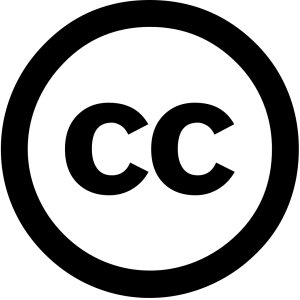
“Creative Commons” is a term that encompasses three interrelated entities:
- A non-profit organization
- A set of open licences
- A global movement
The organization
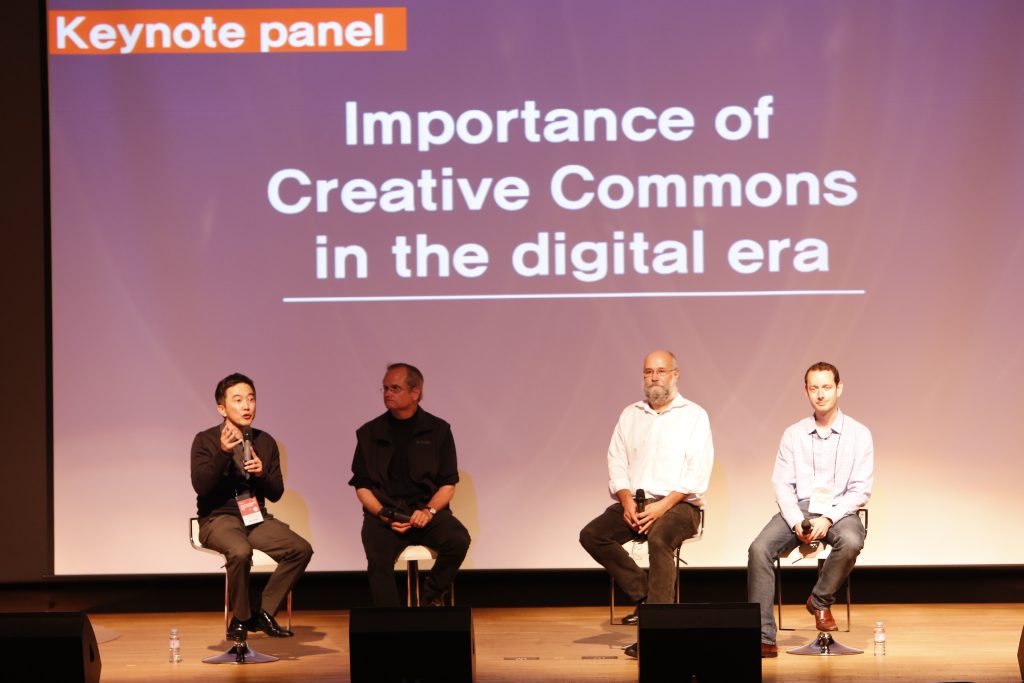
Creative Commons is a non-profit organization founded in 2001 to facilitate the distribution of artistic works via digital technology and a set of legal tools called the Creative Commons licences.[1]
Creative Commons was founded to resolve the tension between 1) creators’ ability to easily disseminate their works using digital technology and 2) copyright law.[2] As the new millennium dawned, computers and the internet made it faster and cheaper than ever to distribute books, articles, movies, and more — but copyright laws written with printing presses in mind prevented digital technology from living up to its full potential.
The licences
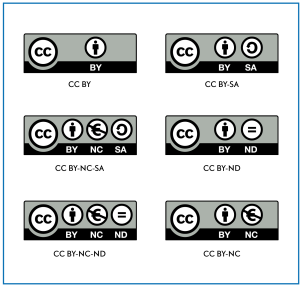
Enter the Creative Commons licences: a set of open licences that allow creators to hold copyright while simultaneously permitting people around the world to use their creations. If a work carries a Creative Commons licence, anyone may copy it or share it with others, as long as they attribute the creator. Depending on its licence, you may be able to modify the work or combine it with other similarly licensed works to create something brand new.
Creative Commons licences present a simple way to share works legally via the power of the internet: those who wish to provide their works freely may do so without having to form a new agreement with every individual who wants to take advantage. The terms of a Creative Commons licence are easy to understand for all parties and remove the need for lawyers or contracts when an author wants to share the rights to use their work.
The movement
The Creative Commons movement is made up of everyone who promotes the use of Creative Commons licences, creates and shares artifacts that carry Creative Commons licences, and lobbies governments to enact policies that espouse the ideals of the movement. The Creative Commons Global Network (CCGN) structures over 700 people in over 45 national chapters and connects advocates, lawyers, administrators, and authors who want to embrace the commons.
Many people are not formally connected to Creative Commons via the CCGN: instead, they drive the movement forward by creating openly licensed videos, retweeting posts by open publishing presses, and convincing their colleagues to choose open. There are also other open movements, like the Open Access movement or the push for open education by organizations like OE Global, that advocate for the use of open licences for specific purposes.
How it Started
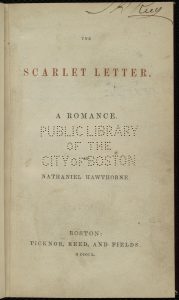
Creative Commons was born out of conflict between copyright law and the desire to share works via the internet. It all began with the case of Eldred v. Ashcroft (2003), which was argued in the Supreme Court of the United States by Lawrence Lessig, a Stanford law professor who would go on to found Creative Commons.
In 1995, Eric Eldred, the lead petitioner in the case, was a retired computer programmer from New Hampshire, USA, who wanted to make literature more appealing to his children. He had the idea to post the writing of Nathaniel Hawthorne on the web in the hopes of elevating Hawthorne’s works to the same level of coolness as the newly emerging internet.[3] This didn’t quite work out the way Eldred expected: Nathaniel Hawthorne remained uninteresting to his children, but uploading literature that had entered the public domain became much more interesting to Eldred. He added more books to his website in an effort to make classic works available and accessible to everyone.
In 1998, Eldred was poised to add Robert Frost’s poetry collection New Hampshire to his website, as its copyright was about to expire. And he would have gotten away with it, were it not for the Sonny Bono Copyright Term Extension Act.
Sonny Bono Copyright Term Extension Act (1998)
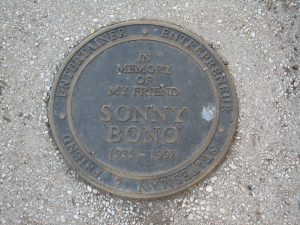
The Sonny Bono Copyright Term Extension Act is a law that was passed in the United States in 1998. This law, also known as the Copyright Term Extension Act (CTEA), set the duration of copyright at the life of the author plus 70 years after their death, or at 95 years after publication, if copyright is owned by a corporation. It extended the length of a copyright term in the United States by 20 years, effectively preventing anything from entering the public domain for two decades.
A brief history of U.S. copyright law
This act was an amendment to the Copyright Act of 1976, which came into effect on January 1, 1978. The Copyright Act of 1976 extended copyright terms in the U.S. far beyond what prior regulations had set. Under this act, a work was protected under copyright for the duration of the author’s (creator’s) life, plus 50 years, or for 75 years after publication, in the case of works published by corporations.[4]
Under the previous act — the Copyright Act of 1909 — a work was automatically under copyright for 28 years, and then the copyright holder had the option to apply to extend copyright for an additional 28 years, for a total of 56 years.[5] The 1976 act increased this possible second copyright term from 28 to 47 years, for a total of 75 years of protection, as long as the copyright holder applied to extend the term.
The Copyright Renewal Act of 1992 — which was enacted on June 4, 1992 — made it even easier to enjoy extensive copyright protection. This amended the Copyright Act of 1976 such that works that were still in their first term of copyright on January 1, 1978, no longer had to apply to renew their copyright: copyright was automatically extended for a total of 75 years of protection.[6]
Case Study: The Giving Tree
The Giving Tree is a children’s book written by Shel Silverstein and published by Harper & Row in October 1964, with the copyright belonging to Evil Eye LLC. When the book was published, the Copyright Act of 1909 was in effect, so The Giving Tree was originally under copyright for 28 years through December 31, 1992. If it acted before the end of 1992, Evil Eye LLC could have enacted a second copyright term of 28 years, leaving the book to enter the public domain after December 31, 2020, after enjoying 56 years of copyright protection.
But then the Copyright Act of 1976 extended the length of the potential second copyright term from 28 to 47 years, for a total of 75 years of protection. The Copyright Renewal Act of 1992 meant that the copyright term extension was automatically granted, so copyright was extended until December 31, 2039.
Now, with the passage of the Sonny Bono Copyright Term Extension Act of 1998, The Giving Tree will lose copyright protection after December 31, 2059 — a full 95 years after its publication.
Eldred v. Ashcroft (2003)
New Hampshire by Robert Frost was supposed to enter the public domain after December 31, 1998, since it was published 75 years before, in 1923. But CTEA came into effect on October 27, 1998, dashing any hopes of this work being in the public domain until after December 31, 2018.
Eldred wanted to fight back against this law that prevented anything from entering the public domain for the next 20 years. Represented by Lawrence Lessig, he took his case to court, where it went all the way to the Supreme Court of the United States. Lessig argued that CTEA was unconstitutional, on account of setting precedent for making copyright terms essentially unlimited, as well as violating the First Amendment to the U.S. Constitution, which protects the right to free speech. In January 2003, the Supreme Court ruled against Eldred, saying that Congress had every right to set copyright terms, as long as they were not actually unlimited.[7]
Eldred and Lessig lost their battle to ensure the public domain did not get forgotten by the U.S. Congress. However, their fight did inspire Lessig to do something that would provide an alternative to the public domain: establish Creative Commons and design easy-to-use legal tools that would encourage sharing and reuse of creative works. The Creative Commons licences were released in 2002, and the rest is history.
How it’s Going
Today, there are over 2 billion works in the world that carry a Creative Commons licence.[8] This includes videos, comic strips, textbooks, photos, music, and more. Here are just a few places to look for works out in the open:
- Openverse: use this search engine to find openly licensed images and audio
- YouTube: after entering a search term on YouTube, click on Filters and select “Creative Commons” under Features to get only Creative Commons–licensed videos
- Pressbooks Directory: find over 4,500 digital textbooks on a wide range of subjects
Get involved
Anyone who wishes to contribute to the free and open sharing of human knowledge is welcome to join the Creative Commons movement. Here are a few ways to get involved with Creative Commons:
- Attach Creative Commons licences to your original works. If you’re not sure what licence is best for your purposes, a Creative Commons tool can help you choose a licence.
- Share works that carry Creative Commons licences with your friends, family, coworkers, and social media networks.
- Join the Creative Commons Global Network and help advocate for government policies that support and incentivize open sharing.
Media Attributions
- “CC icon” by Creative Commons is used in compliance with the Creative Commons Trademark Policy
- “_ON_1034” by CCKorea is used under a Creative Commons Attribution 2.0 Generic licence (CC BY 2.0)
- “Open Content A Practical Guide to Using Creative Commons Licences web-29” by Markus Büsges is used under a Creative Commons Attribution-ShareAlike 4.0 International licence (CC BY-SA 4.0). The image has been cropped.
- “The Scarlet Letter. A Romance [Title page]” by Boston Public Library is used under a Creative Commons Attribution 2.0 Generic licence (CC BY 2.0)
- “Sonny Bono park plaque” by buschap is used under a Creative Commons Attribution-NonCommercial 2.0 Generic licence (CC BY-NC 2.0)
- Creative Commons. History. Archived October 7, 2011. https://web.archive.org/web/20111007165253/http://creativecommons.org/about/history ↵
- “1.1 The Story of Creative Commons” by Creative Commons. CC BY 4.0. ↵
- Lawrence Lessig. Legal Affairs. How I Lost the Big One. March/April 2004. https://www.legalaffairs.org/issues/March-April-2004/story_lessig_marapr04.msp ↵
- “Copyright Act of 1976” on Wikipedia. CC BY-SA 3.0. ↵
- “Copyright Act of 1909” on Wikipedia. CC BY-SA 3.0. ↵
- “Copyright Renewal Act of 1992” on Wikipedia. CC BY-SA 3.0. ↵
- Lawrence Lessig. Legal Affairs. How I Lost the Big One. March/April 2004. https://www.legalaffairs.org/issues/March-April-2004/story_lessig_marapr04.msp ↵
- Creative Commons. When we share, everyone wins. Archived October 2, 2022. https://web.archive.org/web/20221002023527/https://creativecommons.org/ ↵

